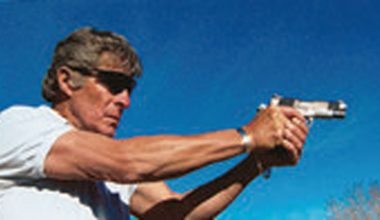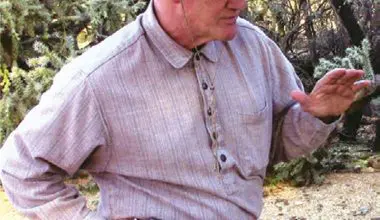According to the news, a member of the Navy recently went to a bar, met a female and brought her back to his domicile. He proceeded to place what was ostensibly an unloaded gun to his head and pulled the trigger. It was not unloaded.
Not too long ago, I had a case involving a couple of southern California police officers. They had been drinking and returned to a hotel room. They were horsing around and one of the officers aimed and pressed the trigger in the direction of the other officer. The gun was loaded and the inevitable occurred.
Last year, a firearms instructor thought it would be a novel idea to “light up” his partner at the Academy with a Simunitions pistol. One simple problem: it was a loaded .40-caliber Glock. The results were a round through the rear and out the front—and an amputation.
These are all tragedies that could have been avoided with some common sense and adherence to the basic tenets of firearms safety.
Unfortunately, the firearms safety measures that are very deliberately put in place to avoid such life-threatening occurrences are often not even practiced by those whose professions rely on it.
At ITTS, we have received some fairly radical training videos that exemplify what I am alluding to. A recent one had supposed “instructors” whirling and twirling while shooting guns in every conceivable direction. They shot past, around, and over one another without a clue as to what they were doing. Clearly none of them are professional by any stretch of the imagination.
These are not tactics—this is tactical porn intended to elicit “ooh”s and “aah”s from the bubble-gum crowd, but certainly not for professionals who take training and safety seriously. Confidence building does not occur by letting someone shoot past you while others run around in the foreground. Someone will eventually get hit and it will be the fault of everyone participating in this nonsense.
To refresh your memory, the Reitz Law of Safety states: “The more you work with firearms, the more dangerous you become just by the sheer percentages of how often you handle a firearm.” We are human, so we make mistakes. We are not perfect, so we make mistakes. We are not machines, but rather fallible organisms that become fatigued and are subject to brain fade. Not a single firearm devised can compensate for the human factor. The human can, but not the firearm.
It doesn’t do any good to prang yourself before a firefight. The same holds true for a warrant service, operation or vehicle stop. You are, however, giving your opponent a fighting chance, and for that I commend you. That’s your call—although it is one which I would not personally make.
It’s going to be rather embarrassing to lie on the operating table and explain to the trauma surgeon that you did not get hit in a blazing duel with many bad hombres— you did it to yourself. The nurses will giggle, your buddies will own you for life, and the surgeon will wonder when the next one of you is going to show up. At this point it seems inevitable.
There’s a lot of whiz-bang firearms manipulation out there these days. It looks fancy and definitely high speed, but it means nothing in a gunfight. Most of it is smoke and mirrors, marketing and Hollywood spin, a cheap parlor trick that has absolutely nothing to do with the gunfight itself. Far from it.
Firearms safety is an integral part of tactics. Great tactics mean nothing if you’re shooting yourself, your partners and things you don’t intend to.
If you can make the tires on my vehicle rounder, I’ll buy them. The point is you can’t. A circle is a circle. It’s as round as it’s going to get. It’s as efficient as it’s going to get. Just because someone invents the latest doesn’t mean it’s the greatest. You abrogate safety at your peril and that of others. Some techniques are just plain unsafe. End of discussion.
There’s a reason ITTS has never had a single firearms mishap—we do not delude ourselves into thinking we’re above the safety issues.
I’ve represented some firearms manufacturers in lawsuits, and we’ve won every one. It’s always been the operator, not the device. In the aftermath of these tragedies, some people seem puzzled. I’m not. Any person with a modicum of common sense could have seen disaster coming a mile away. How you work and move with a firearm speaks volumes about your professionalism and expertise.
Firearms will out-think you every time. How about this? Lock down on safety. Lose the ego. Think things through. Chances are you’ll be the better for it. Professionalism is just that—professionalism. Safety is just that—safety.




